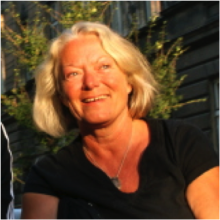This virtual exhibition features, in English translation, short excerpts from German-language literary texts that address human-nature entanglements. The aim is to show how literature can contribute to understanding the relation between humans and nonhuman nature. What aspects of human-nature relations are addressed, at what point in literary history, and how are they shaped poetically? This virtual exhibition is also available in German here.
Introduction to the Exhibition
As the prominent postwar German-language writer Christa Wolf wrote in her novel about the 1986 nuclear accident in Chernobyl, referencing the title of Joseph Conrad’s novel on the European colonial tradition, literary texts have the ability to look right into the “heart of darkness” of our civilization and zoom in on our blind spots. Especially fiction can give shape to ideas that we seldom acknowledge in reality or that we prefer to repress. For these reasons and more, literature is an excellent platform for reflecting on the topic of human-nature relations, especially their more problematic aspects. This topic receives particular attention in a great number of literary texts of the German tradition.
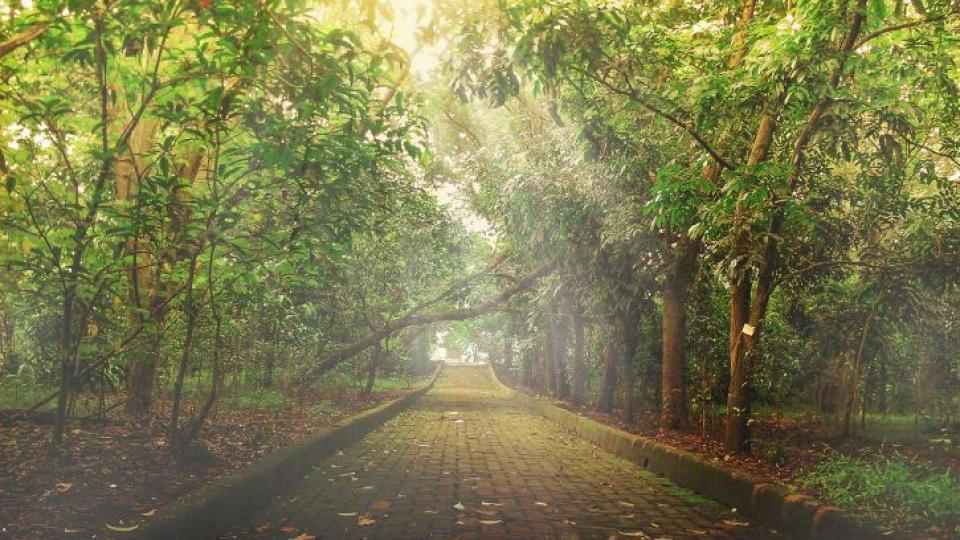
An urban forest in Jakarta, Indonesia. Photograph by Yogas Design.
The aim of this virtual exhibition is to show how literature can make an important contribution to understanding the relation between humans and nonhuman nature. In particular, it asks,
how has German-language literature and culture of the last two hundred years represented and, through these representations, shaped the relationship between humans and nature? Which aspects of that relationship come into play, at what point in time, and in what poetic form?
The exhibition is conceived as a “curated stroll” through the German-language literary and cultural tradition of the last two centuries, along which select examples invite critical reflection on the relationship between humans and nature, or “ecocriticism.” The story that emerges from that tradition is a story of deep entanglements, of melancholy about the increasing problems with our environment, and at times even open criticism of the increasing scale and nature of these developments. A modular structure and poetic approach guide this “stroll” through literary history. For those who wish to continue their journeys, a list with further readings about ecocriticism and the environmental humanities is provided.
The first signs of a literary sensitivity about human and nature entanglements can be detected in the nineteenth century, which is one of the reasons older literary texts are featured alongside modern and more contemporary examples. While this exhibition lacked space for many contemporary examples, this is hopefully offset by the historical trajectory it aims to reveal.
Scientists have recently started to call the human-nature entanglement that has intensified over the last 250 years and resulted in the Industrial Revolution, the proliferation of nuclear technology, and global trade in an ever more globally connected economy the “Anthropocene.” This is a term for an age in which humans feature as agents on a geological scale with the ability to alter the Earth’s atmospheric systems. In 2014–2016, the Deutsches Museum in Munich, in collaboration with the Rachel Carson Center of Environment and Society, organized the first exhibition on this topic (link is external) and a companion virtual exhibition.
This virtual exhibition on literary sources is designed as a complementary resource, to offer deeper understanding of the cultural dimensions of the Anthropocene. It is organized in four chapters, each of which highlights a different aspect of human-nature entanglement with five to seven literary examples. While it focuses on four themes, topics such as water, food, and the relationship between human and nonhuman nature beg exploration, as well. Perhaps these topics will become part of a more comprehensive approach at a later stage in the project.
Unless noted otherwise, English translations of German source material are by the virtual exhibition curator.
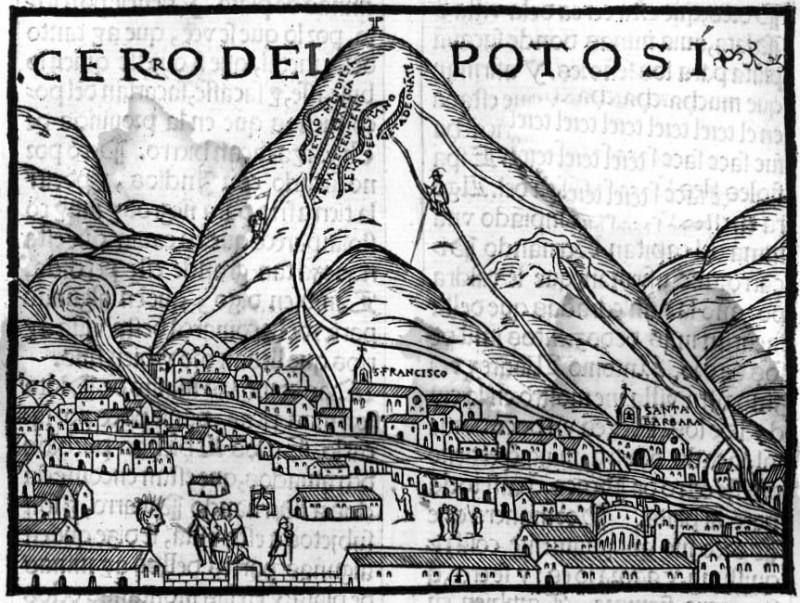
Sixteenth-century illustration of the Bolivian city Potosí, from Crónica del Perú. Pedro Cieza de León, 1553.
1. Transformation of landscapes: Humans have altered landscapes from the very beginning of civilization. With Europe’s expansion into the New World and across the globe during the colonial era, more radical and systematic transformations of landscapes have occurred, leading to ever-increasing trade, growing need for transportation, unprecedented population growth, the spread of industrial agriculture, rapid technological advancements, and ever-intensifying extraction of natural resources.
The German Romantic poets still welcomed the importance of mining and the significance of minerals as a counterweight to the rational exploitation of nature in the Enlightenment.
The well-known German poet, novelist, playwright, and scientist Johann Wolfgang von Goethe, however, in his famous play Faust, positioned his protagonist on the threshold of an attitude toward nature that is less romantic and much more attuned with finding modern technological solutions to environmental problems. In the end, however, Faust is punished for his technological hubris.
Mid-nineteenth-century realist authors, on the other hand, started focusing on the more problematic aspects of human-nature entanglements such as encroaching human settlements and the expansion of transportation systems. Modern and contemporary literature, finally, feature the destructive extent of these transformations more openly and critically.
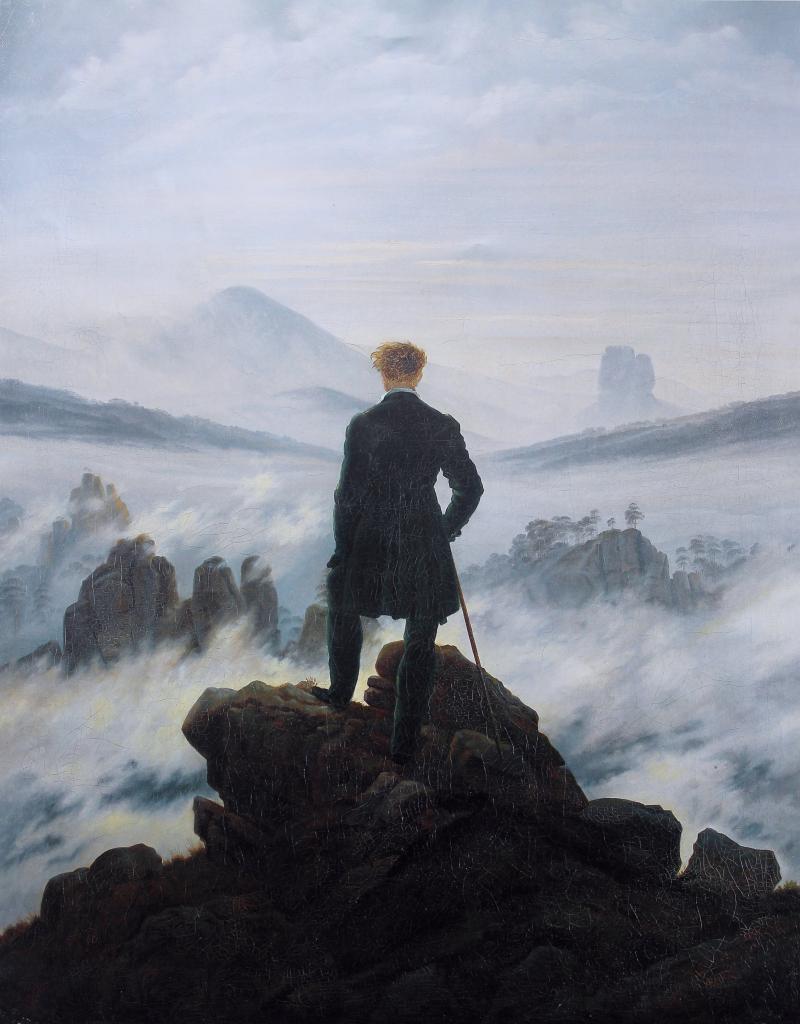
Caspar David Friedrich, Wanderer über dem Nebelmeer [Wanderer above the sea of fog], 1818. Oil on canvas, 98.4 × 74.8 cm. Held by Kunsthalle Hamburg.
2. Mountains, glaciers, and climate: Mountains and glacial environments are the stuff of many German-language literary descriptions. It is the Italian humanist Francesco Petrarch, however, who inaugurated the genre of the literary mountain ascent. The German-Swiss author Albrecht Haller then wrote the first German-language poem that dealt explicitly with Alpine nature.
Whereas the German Romantic poets still highlighted mountainous nature as deeply ambiguous, where nature is a place of danger and a place of great attraction at the same time, Goethe’s Faust tried to understand mountainous nature in its materiality through scientific studies.
Later, in the middle of the nineteenth century the Austrian realist author Adalbert Stifter became the first German-language literary writer (and painter) to give nature a greater voice in his fiction. Modernism builds on this breakthrough and focuses on the more often destructive results of human-nature entanglements, ultimately drawing connections to topics such as global warming and climate change.
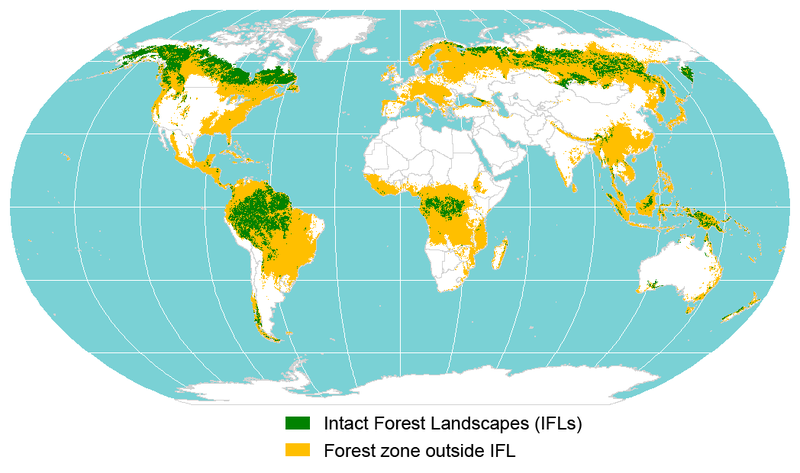
Map of the world’s intact forest landscapes. Graphic by Peter Potapov.
3. Forests and deforestation: These topics are particularly prominent in Austrian literature. Adalbert Stifter’s fictional characters, even though they are still familiar with the old stories about the forest as refuge from civilization, also learn about its precariousness.
The modern Austrian writer Marlen Haushofer locks her female protagonist behind a mysterious wall where she has to learn how to live sustainably with her animals in nature. Nobel laureate Elfriede Jelinek’s Austrian woods, by contrast, are all but suffering from human intervention: tourists and loggers alike claim the Austrian countryside for their needs.
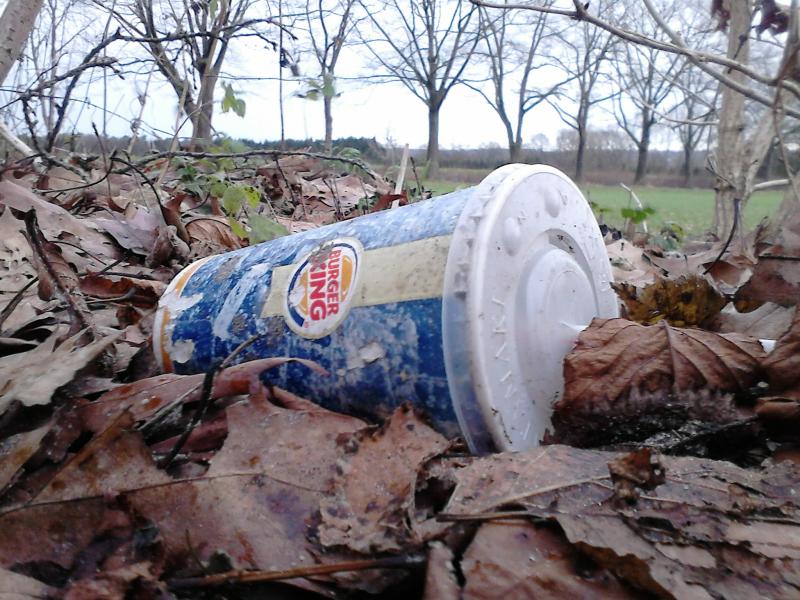
A fast food container in the forest. Photograph by Netzschrauber.
4. Pollution and waste: Wilhelm Raabe was the first German-language author to call attention to pollution in a late-nineteenth-century novel about the plights of a miller who successfully fights against a mighty sugar factory that is dumping industrial waste into the local stream. Even though a court orders the factory to compensate the miller for his losses, the miller is still disheartened and gives up his business. In the end, the idyllic mill gives way to a modern dry-cleaning plant.
The topic of waste and pollution receives a much more prominent role in twentieth-century literature. In the 1970s, German filmmaker, actor, and director Rainer Werner Fassbinder wrote a controversial play about runaway urban developments in Frankfurt that create human waste, and East German poet and playwright Heiner Müller crafts a poetic vision of a lake near East Berlin that is ridden with human as well as industrial waste. Finally, Christa Wolf addresses the subject of nuclear pollution in her novel about the 1986 Chernobyl accident.
Via a small selection of literary examples, many of them taken from fiction reflecting the curator’s preferences, this virtual exhibition hopes to spark a conversation and engender further reflection on these and other topics that relate to human-nature entanglements. While I focus on narrative, drama, and the philosophical tradition, other scholars should explore the rich corpus of contemporary poetry that addresses human-nature entanglements openly and critically. A starting point might be Lyrik im Anthropozän (link is external), the collection of poetry (available only in the original German) put together by the curators and research affiliates of the “Welcome to the Anthropocene: The Earth in Our Hands (link is external)” exhibition at the Deutsches Museum in Munich.
I invite visitors to this exhibition to join me on a curated walk through a small sample of the rich German literary and cultural history of the last two centuries. No specialized knowledge is required. I also invite visitors to reflect on what they are reading. Literature, it turns out, not only mirrors the important discussions of the day; it also shapes our opinion about social and political topics and offers critical perspectives on them.
Acknowledgements
The author would like to thank two anonymous peer reviewers for their feedback, and the team from the Environment & Society Portal at the Rachel Carson Center for its support and assistance. Thanks go to Katrin Kleemann and Iris Trautmann for the coordination and communication; to Kimberly Coulter, Jonatan Palmblad, and Katie Ritson for their editorial contributions; to Susanne Köller for her work on the German text; and to Mara Appelhagen and Anne Schilling for their help with the formatting.
About the author
Sabine Wilke is professor of German at the University of Washington. She is also associated with and teaches in the European Studies Program. Her research and teaching interests include modern German literature and culture, intellectual history and theory, and cultural and visual studies. She has written books and articles on body constructions in modern German literature and culture, German unification, the history of German film and theater, contemporary German authors and filmmakers, and German colonialism.
With assistance from the Alexander von Humboldt Foundation, Wilke is directing a transatlantic research network on the environmental humanities. She recently edited, with Japhet Johnstone, a collection of essays on Readings in the Anthropocene: The Environmental Humanities, German Studies and Beyond (Bloomsbury Press 2017). In 2013 she was a Carson Fellow at the Rachel Carson Center for Environment and Society in Munich and has recently published Narrating and Depicting Nature: German Culture and the Environmental Imagination (Brill 2015). Her scholarly work on German literature and culture in the context of the environmental humanities revolves around the themes of pollution, tourism, waste, visions of nature before humans, and the concept of the Anthropocene.
Sources & Further Reading in Ecocriticism
Sabine Wilke, Virtual Exhibitions 2018, No. 4
Human-Nature Relations in German Literature:
A Curated Stroll through a History of Entanglement
